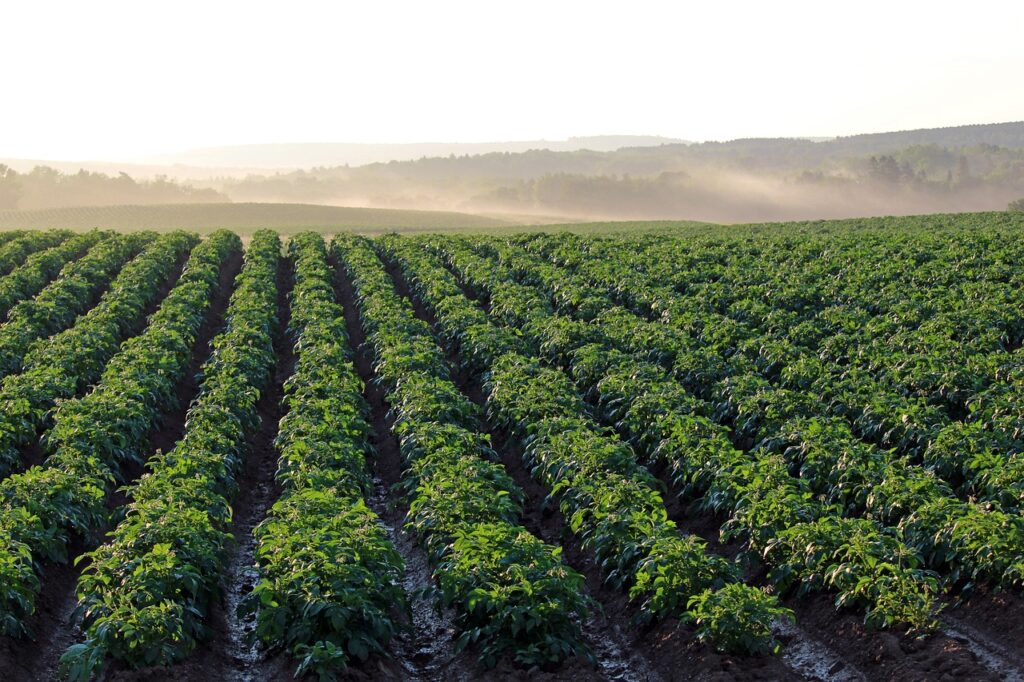
Colorado is into potatoes in a big way. The state is the 6th biggest potato producer, many of which are grown in San Luis Valley – the largest alpine valley on earth.
7.5 million pounds of potatoes are produced in Colorado daily, equating to a yearly value of 2.3 billion pounds worth of the 70 different potato varieties available in the state.
That’s a lot of spuds!
But our favorite vegetable faces some big struggles. The crop is one of the most vulnerable to climate change and can quickly suffer from heat and/or drought stress, frost damage when it is cold, and the tubers can quickly become diseased if faced with sub-optimal growing conditions.
It doesn’t take much to lose a potato harvest and while Colorado had a great year for potato growth in 2023, these problems aren’t going to get better any time soon.
This is where solar energy can step in and provide a surprising solution. By combining solar panels and potato farming on the same plot of land, huge benefits can be gained.
Sounds strange but it’s true. Here’s everything you need to know about solar energy and how it can boost your potato crops.
In a Nutshell
- An agrivoltaics setup can create healthier and more abundant potato yields
- Solar panels create shade which protects crops from heat stress and dehydration
- Raised solar panels improve soil moisture and prevent water runoff
- Agrivoltaics promotes biodiversity and encourages beneficial insects to flourish
- Solar energy can power your potato storage and protect your business from blackouts
- More precise irrigation systems can be achieved with solar energy
- Your potato farm’s energy bills can be reduced by up to 96%
Agrivoltaics: Potatoes and Panels Working Together
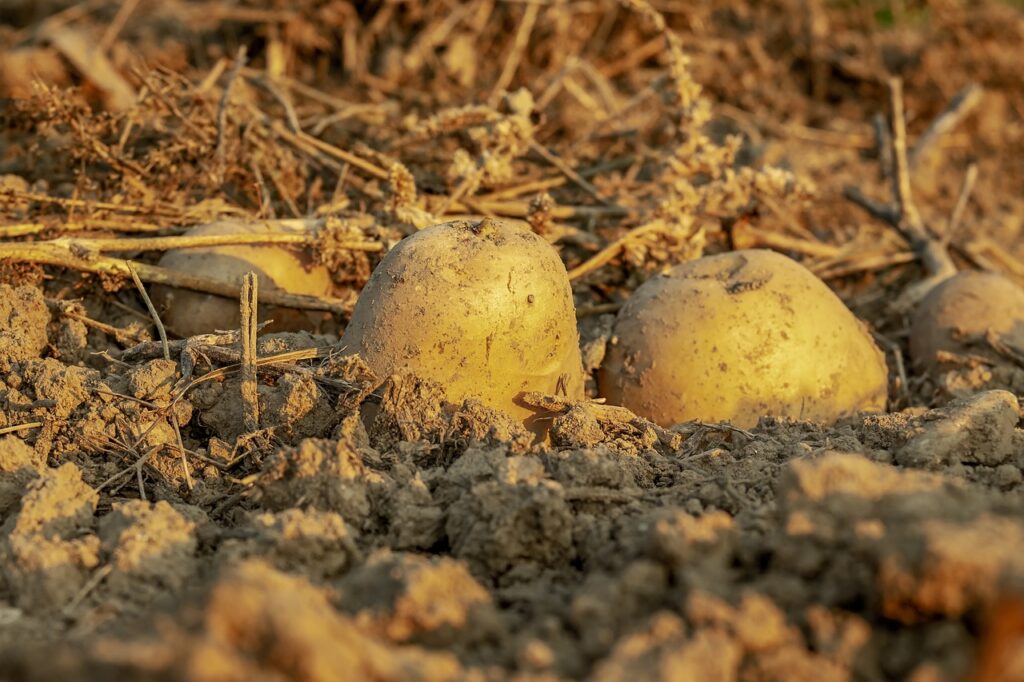
Agrivoltaics is a word that is becoming more commonly heard within farming communities. While it is a fairly new practice in the USA, agrivoltaics has actually been around for several decades and is widely used in parts of Asia, Europe, and Africa to some extent.
The term “agrivoltaics” refers to using the same plot of land for solar panels and agriculture.
The type of agriculture can be varied, but some common applications include:
- Growing shade-tolerant crops beneath the panels (that includes potatoes!)
- Using the space around and under the panel for livestock grazing pastures
- Growing wildflowers under and around the panels for nearby bee colonies and honey production
An agrivoltaics setup requires special consideration because the intended agricultural activity determines how the solar panels should be positioned.
In most cases, the solar panels are raised higher off the ground to allow clearance underneath so crops and produce can grow comfortably and animals, humans, and even farm machinery can pass safely underneath.
This setup allows the same piece of land to receive a duel use – and duel profit – and farmers no longer have to agonize over whether or not to give up their precious farmland in favor of solar panels.
Moreover, the panels benefit plant life positively resulting in better-quality yields. It’s pretty incredible just how good an agrivoltaics farming system can be!
How Can Agrivoltaics Help Potato Farming?
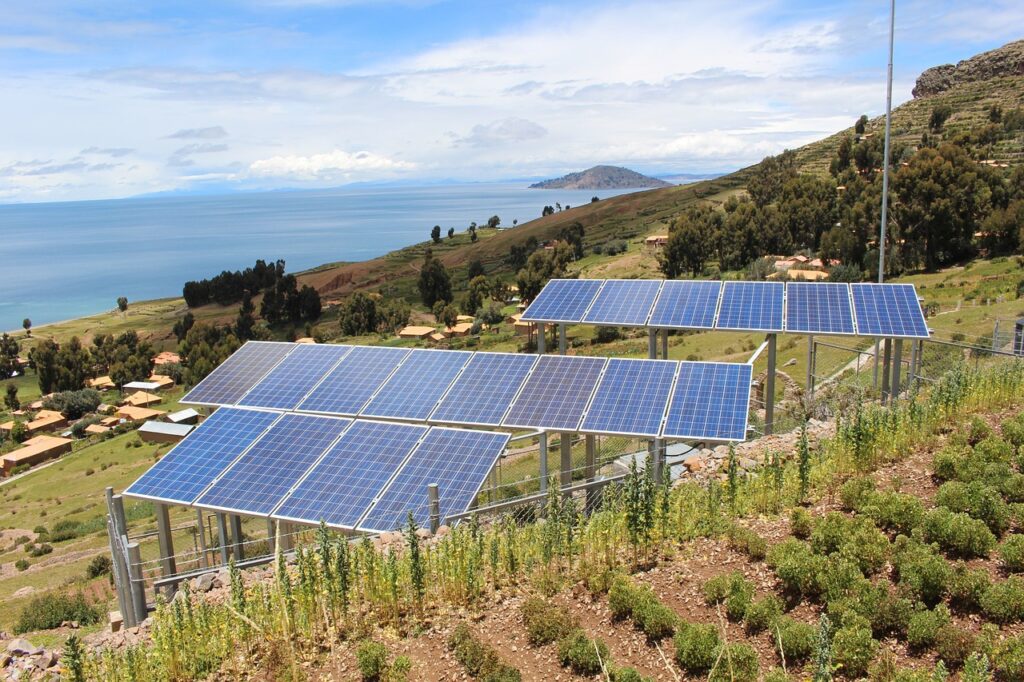
How do solar panels achieve better crop yields? Well, the answer is all down to the shade that the solar panels create on the area beneath them.
This creates a microclimate that helps regulate the temperature. When it’s hot, the air below the panels stays a little cooler, and when it’s cold, the air remains warmer. This shields the crops from intensive temperature shifts and maintains more balance overall.
Less Watering

One big benefit of agrivoltaics is the reduced watering needs for your crops. The aforementioned shade and microclimate perform a vital role in retaining soil moisture and reducing water evaporation from the ground.
A study was conducted on the rate of water evaporation under an agrivoltaics system, and it was determined that it reduced by 21% – 33%.
During periods of drought, retained soil moisture is essential. If the ground gets too dry and hard, water will simply run across it and away somewhere else and won’t get to the thirsty roots. Because the ground under solar panels stays moist, it allows additional water to penetrate more easily, therefore, preventing water runoff.
Potatoes like steady moisture levels and they’re unhappy if the ground gets too wet or too dry. Agrivoltaics will contribute to a more consistent environment and optimal moisture levels for your spuds.
Protection From Heat Stress

Potatoes don’t do well in too-hot conditions and they can suffer from heat stress very easily. When this happens, tuber growth is stunted and their shelf-life is compromised.
The optimal temperature for a potato is between 59˚F and 68˚F. However, when you start getting to 86˚F and above, heat stress starts occurring. If temperatures reach over 100˚F, the crop will wither and die.
Creating shade can do a lot for heat stress prevention. When you position solar panels higher off the ground, they create enough shade to protect crops while still allowing enough sunlight to reach them.
One study found that panels mounted 13 feet off the ground reduced ground temperatures by up to 18˚F providing a more tolerant environment for the soya bean crop growing beneath them.
When your potatoes don’t have to deal with heat stress as much, they can continue growing into a healthy and good-sized harvest. Solar panels offer the solution and prevent them from being overexposed to the sun.
Increased Biodiversity

When conditions are optimal, flora and fauna thrive. It’s a delicate balance, and to achieve it, you need the right temperatures and moisture levels. If these are thrown out of whack, pests and diseases become prevalent and will threaten your potato crop.
Thanks to the microclimate generated under solar panels, a healthy biodiversity is promoted. This encourages more of the good stuff such as lady beetles, damsel bugs, and green lacewing who work hard to keep potato-damaging pests at bay.
Increased biodiversity also improves soil health and resilience against environmental challenges while contributing to better moisture retention.
Overall, it’s good for your crops, good for the ground, and good all-round!
Solar Energy for Potato Storage
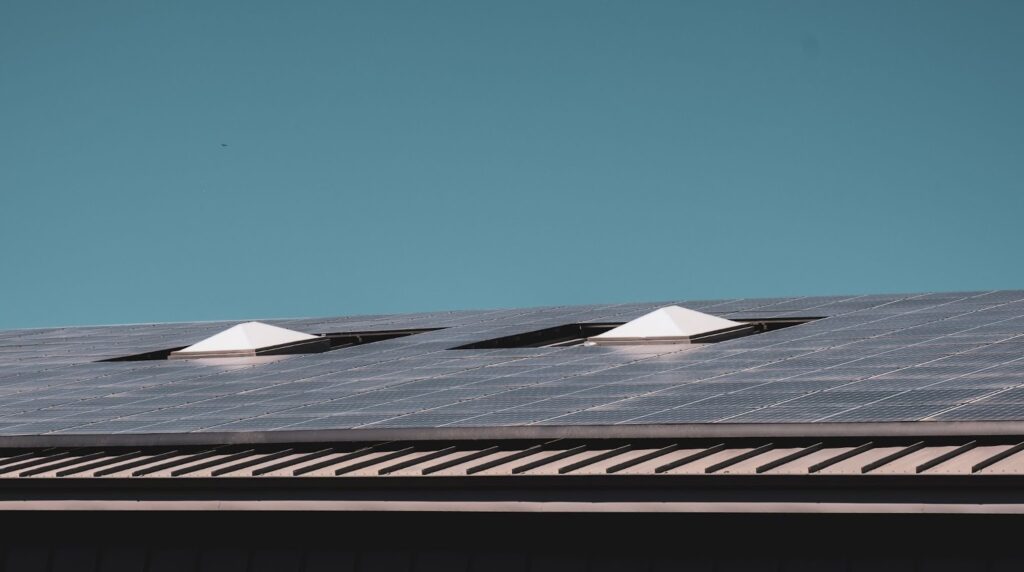
Managing and storing potatoes so they retain their shelf life and don’t spoil is a challenge. Large cold store facilities are required so a regular temperature can be maintained at all times.
This uses up vast amounts of electricity. An analysis by the European publication Farmers Journal has estimated that a facility with four cold stores with various auxiliary buildings dealing with 10,000 tonnes of potatoes annually will burn through 464,000 kWh worth of electricity every year.
The resulting electricity bill is a massive €116,000 which equates to $127,287.
But potato storage is vulnerable. While the grid is providing power, there’s no issue. However, what happens to your storage facilities when a blackout occurs?
Even a blackout of a few hours can cause farmers to lose all their produce. Sure, there are generators as backup, but it’s unlikely you have enough generators or power to supply your entire operations. Besides, running generators is hugely expensive.
Solar energy, of course, can provide an easy solution. They can generate more than enough power during the day to keep your facility running smoothly and any excess power the panels generate can be sent to the grid in exchange for energy credits.
These credits are redeemed when you need to draw power from the grid during hours of darkness (when your solar panels aren’t working) in a process called “net metering.”
However, if you want more resilience and to go completely off-grid, installing solar batteries allows you to store your excess power and use it when needed. And if a grid-based blackout occurs, you won’t be affected!
As a final note of reassurance on this subject, Colorado is one of the sunniest states going. With over 300 sunny days, you can be reassured that your panels will be working efficiently on most days. Even when it’s cloudy, they still produce electricity though with a slightly reduced efficiency rate.
Solar Energy for Potato Irrigation

Irrigation is super important for potato crops. It needs to be precise!
Prolonged saturation in water leads to rot and decay, and not enough water leads to drought stress. Spuds need a “Goldilocks zone” of watering – not too much but not too little.
Irrigation systems can be complex to manage since they require electricity to run the pumps that deliver the water. This means your irrigation lines need to be close to a power source and often limit how far across your land it can reach.
Whether you use the grid or generators for power, it’s going to limit where you can place your irrigation pumps.
The issue with this is that it’s often challenging to obtain even coverage which leads to some areas of crops getting plenty or too much water, and those on the outskirts receiving very little.
Solar energy is extremely versatile. As long as they have access to sunlight, they can be placed just about anywhere. This allows you to create a better, more precise water delivery system. Even better, if you’ve got an agrivoltaics setup, your panels will be right where the water needs to be – next to the crops!
Reduced Energy Bills

After reading about how solar energy can power your potato storage facility, you’re probably keen to understand just how much it can save you annually.
A well-designed system has the ability to reduce your energy bills by up to 96%!
Let’s take the earlier example of the $127,287 annual electricity bill for the 464,000 kWh worth of energy consumption. If we reduce that by 96%, it’s going to result in an energy bill of $5,091/month or $424/month. We know which we’d prefer!
Also, solar panels last for ages. Most warranties on good-quality solar panels will be at least 25 years. However, if they are well maintained, they often last 30 years and beyond.
Since energy bills are projected to keep rising, your solar system will protect you from these increases for the foreseeable future.
8760 Solar: Get in Touch
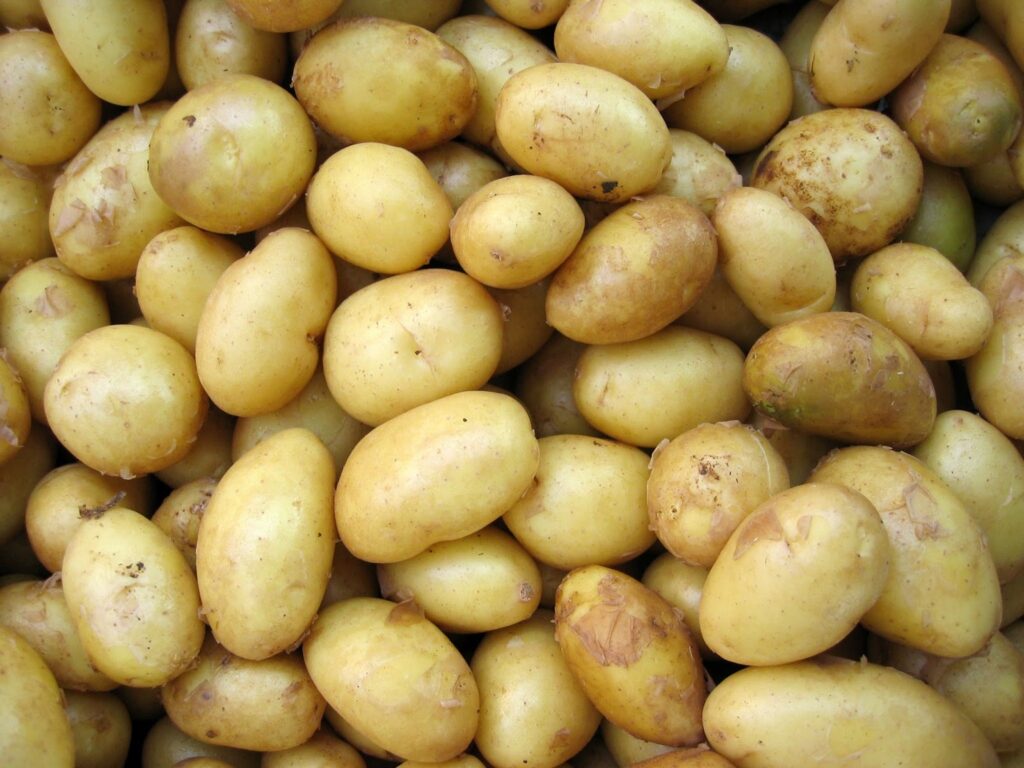
If we’ve piqued your interest in solar energy then our team at 8760 Solar would love to speak with you.
We specialize in providing solar solutions to Colorado’s farms and agricultural businesses – including the state’s potato farmers. Take a look at this testimonial from one of our happy customers. We supplied the Monte Vista-based potato grower with a customized solar system to meet his needs.
And that’s what we’ll do for you too. We’ll complete a full analysis of your farm which will allow us to understand what type of solar system will work best for you. From size to placement, we’ll ensure it meets your needs.
We will also walk you through the application process for the abundant incentives and tax credits that are readily available to those who go solar.
For example, there’s a REAP grant which can cover up to 50% of the cost of the installation. That’s on top of the ITC 30% tax credit and numerous bonus credits you can qualify for.
To get in touch, call or text “READY” at 719 470-0254 contact us via email: sales@8760solar.com. We’ll be standing by to chat with you.
Frequently Asked Questions
How Will Agriculture Benefit by Using Solar Energy?
Solar energy can reduce an agricultural business’s energy bills by up to 96% and significantly reduce its carbon footprint at the same time. Additionally, using an agrivoltaics setup, solar panels contribute toward healthier and more abundant crops.
What Crops Can Be Grown With Solar Farms?
Shade-tolerant crops can be grown beneath solar panels on solar farms. Potatoes, corn, wheat, tomatoes, and peppers do very well as do grapevines and pasture grass.
Is Solar Energy Good for Potato Farming?
Solar energy is great for potato farming as it can reduce potato storage energy costs by 96%. It can also enable you to deliver more precise watering. And, if you grow potatoes beneath solar panels, they will be protected from heat stress and dehydration.
